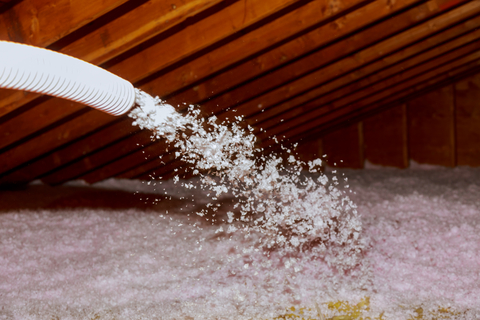Blown In Fiberglass Insulation Problems

So you basically make it worthless.
Blown in fiberglass insulation problems. The result is exposed sheet rock and this is the very thing we are trying to eliminate in an attic. Not so with blown in fiberglass insulation. While settling is one of blown in cellulose insulation s advantages this can also be a problem mostly with walls. And without those heat can easily move through the insulation and dissipate into areas where it shouldn t be.
Light density blown fiberglass insulation at a half pound per cubic foot can be blown away from both eve vents and or tile roof vents on low pitched roofs. Inside fiberglass insulation is tiny air pockets. However concerns persist that fiberglass may cause other more serious problems. Wind appears to have blown fiberglass away.
Generally these irritations will subside once contact with fiberglass ceases. And what happens is the fiberglass insulation divides the wall space into billions of little air pockets and that s what actually slows the heat down. Contact with insulation wool fiberglass can cause skin irritation such as redness and itchiness as well as difficulty seeing and breathing. When insulation is improperly installed it isn t evenly distributed which can also lead to air movement.
It can be installed as either a loose fill or blown in insulation. Settling in attics is less problematic for two reasons. While it may be one of the oldest materials cellulose can still have a number of issues ranging. What could damage my insulation.
Insulation at the attic access point is essential. Some of the most common blown in fibreglass insulation problems revolve around loss of heat moisture and humidity. Traditional insulation like cellulose can be found in thousands of homes but its popularity doesn t mean it doesn t have its problems. It is best to have a professional install blown insulation to ensure even coverage.
Slows the heat from moving through the wall. These air pockets are what slows down the heat transfer process. Inhaling fiberglass particles can cause nose bleeds severe coughing and lung damage. Cellulose insulation is the oldest form of home insulation available on the market today.
For most things we install the tighter the fit the better the item works. Over time blown in fiberglass and cellulose can drift or settle leaving your attic insulation with a lower r value and prone to air movement which will contribute to high energy bills and an uncomfortable home. Like fiberglass asbestos is a silicate fiber. In the worst case scenario small particles can reach the lungs and become lodged into the tissue.
If you compress the insulation you get rid of these tiny pockets of air. Installing fiberglass can also lead to respiratory problems if you do not wear proper safety equipment. If you compress fiberglass insulation you squeeze all of the air out of it. These pockets become thermal bridges which transmit heat or cold into the house.
These are not caused by the material itself. Over time the insulation can pack down and form pockets above the settled areas. Common blown in fibreglass insulation problems.


















